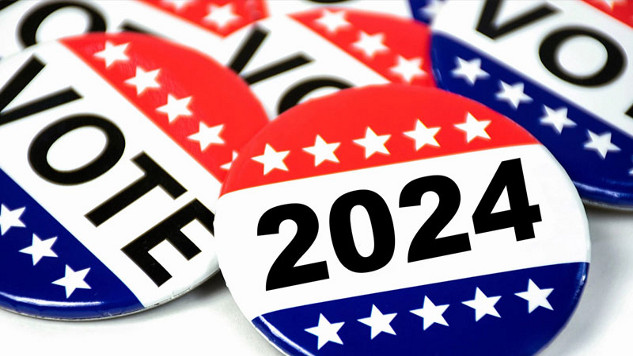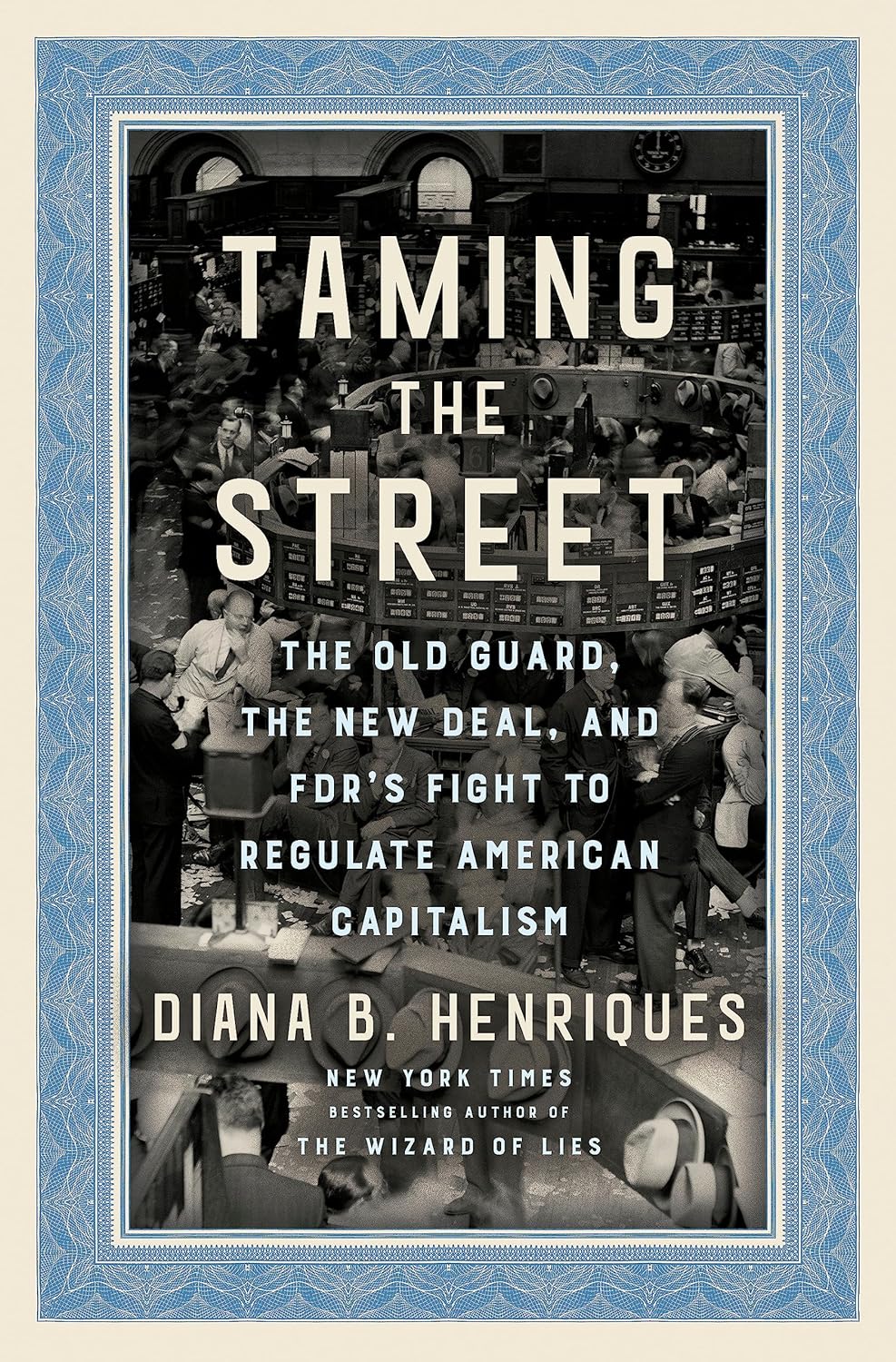
As the world steers its way through the unprecedented changes of the 21st century, there is a recurring echo from the past that many are turning to – the New Deal. Set against the backdrop of the Great Depression, President Franklin D. Roosevelt's suite of financial reforms holds timeless lessons, especially as we approach the 2024 elections.
The World Before FDR’s New Deal
The 1920s, the Jazz Age, was characterized by swift growth, heightened enthusiasm, and rampant speculation. This era, synonymous with flappers and speakeasies, presented an image of prosperity and cultural transformation. However, the financial world was in turmoil beneath this veneer of opulence and vibrancy. Hidden from the casual observer, it was a landscape teeming with deceit, graft, and unpredictability. (Sound familiar?)
The stock market during this time catered predominantly to the affluent elite, serving as a lucrative but perilous playground. Manipulated stock prices, misleading sales practices, and precarious banking systems became commonplace, posing significant risks for even the savviest investors. In such a setting, "banksters" — a term coined by merging 'bankers' and 'gangsters' — thrived. These financial predators exploited the glaring gaps in oversight and regulation, casting long shadows over what seemed to be a golden decade. (Again... sound familiar?)
The Effect of Financial Instability
Many believe that before the catastrophic stock market crash of 1929, only a minority of Americans had significant investments in the stock market. This perception paints a picture of a market limited to the elite, suggesting that its downfall would primarily affect this select group. However, the aftermath of the crash revealed a starkly different reality. The market's collapse sent shockwaves far beyond Wall Street, affecting citizens from all walks of life.
The economic downturn forced the wealthy to reassess and reduce their spending drastically. When people change how they spend money, it's like dropping a stone in a pond. The ripples move out, touching everything in their path. Imagine, for a moment, folks deciding not to buy fancy things or take big trips. Suddenly, those who make and sell those products or offer those services feel the pinch. Even hiring someone to help around the house became too costly for many.
It's a simple reminder of how connected we are and how one choice can significantly impact others. As a result, many previously employed found themselves out of work. This cycle of reduced spending and job loss spread like wildfire, leading to widespread economic hardship. From bustling urban centers to the quietest rural towns, no part of the nation remained untouched by this ripple effect of financial instability.
Roosevelt's Awakening
Imagine being in charge and watching something big and essential break before you. That's what happened to FDR when he was leading New York. The Bank of United States crumbled in 1930. This wasn't just numbers on a screen — real people, small business owners, felt the pain. It was clear: just hoping banks would do the right thing alone wouldn't work. FDR took this lesson to heart, and it helped shape his big plans later on, known as the New Deal, to ensure something like this didn't happen again.
Imagine setting out on a journey with a clear roadmap in hand. That's what FDR did when he aimed for the president's seat in 1932. He didn't just promise a better future; he showed people what it could look like. At the heart of his plan, the New Deal, was a straightforward idea: making money matters clear and fair for everyone. He wanted to set ground rules for the big stock markets, ensure people were honest when selling investments, and stop big companies from unfairly charging their customers. It was all about making the financial world work for everyday folks, not just the wealthy few.
Legacy of the New Deal
Franklin D. Roosevelt's initial tenure as President is often remembered for the flurry of actions he undertook to combat the crippling effects of the Great Depression. Beyond just the financial reforms, FDR launched many programs and strategies with the singular goal of national recovery. His innate capability to restore faith among the American populace was central to this mission. His adept management of the banking crisis, in particular, showcased his commitment and strategic acumen, ultimately playing a crucial role in pulling the nation back from the brink of economic collapse.
Imagine fixing a giant machine with many moving parts; that's what FDR tried to do with his New Deal. It was big, brave, and full of promise. Many of its ideas did great things and helped make our economy stronger for the future. But, like any big plan, not everything worked perfectly.
Some parts didn't quite hit the mark, even with the best intentions. Others had side effects that no one saw coming. It shows that it won't always be smooth sailing when trying to make significant changes. But that doesn't mean you stop trying to steer the ship in the right direction.
Today's Relevance of FDR’s Reforms
FDR's financial reforms, implemented during the Great Depression, aimed to instill stability and fairness in the financial system while shielding investors and consumers from deceitful practices. Although not without dissenting voices, critics contended that these reforms were overly meddlesome and hampered economic expansion.
Nevertheless, hindsight reveals their pivotal role in averting a repeat of the devastating Great Depression. As we approach the 2024 elections, voters must grasp the significance of financial regulation. It's our responsibility to elect candidates who advocate for robust financial regulations and are committed to ensuring Wall Street's accountability.
Recommended Book:
Taming the Street: The Old Guard, the New Deal, and FDR's Fight to Regulate American Capitalism
 Diana B. Henriques' "Taming the Street" serves as a time machine, transporting readers back to an era of financial turbulence. The setting is the aftermath of the catastrophic 1929 stock market crash. Wall Street was a wild frontier in this landscape, primarily governed by influential titans who played by their own rules. But in this uncertain environment, a beacon of hope emerged. FDR and allies like Joseph P. Kennedy and the soon-to-be Supreme Court Justice William O. Douglas stood tall, ready to challenge the status quo.
Diana B. Henriques' "Taming the Street" serves as a time machine, transporting readers back to an era of financial turbulence. The setting is the aftermath of the catastrophic 1929 stock market crash. Wall Street was a wild frontier in this landscape, primarily governed by influential titans who played by their own rules. But in this uncertain environment, a beacon of hope emerged. FDR and allies like Joseph P. Kennedy and the soon-to-be Supreme Court Justice William O. Douglas stood tall, ready to challenge the status quo.
Their goal was noble and straightforward: to protect the average Joe and Jane from becoming mere pawns in a high-stakes financial game. Through Henriques' vivid storytelling, we gain insight into the challenges faced, the dreams fostered, and the sweeping changes initiated during that period. The story she unravels prompts a pressing reflection: In our pursuit of economic growth, how can we build a financial system that genuinely looks out for everyone's interests?
For more info or to order this book, click here.
About the Author
 Robert Jennings is co-publisher of InnerSelf.com with his wife Marie T Russell. He attended the University of Florida, Southern Technical Institute, and the University of Central Florida with studies in real estate, urban development, finance, architectural engineering, and elementary education. He was a member of the US Marine Corps and The US Army having commanded a field artillery battery in Germany. He worked in real estate finance, construction and development for 25 years before starting InnerSelf.com in 1996.
Robert Jennings is co-publisher of InnerSelf.com with his wife Marie T Russell. He attended the University of Florida, Southern Technical Institute, and the University of Central Florida with studies in real estate, urban development, finance, architectural engineering, and elementary education. He was a member of the US Marine Corps and The US Army having commanded a field artillery battery in Germany. He worked in real estate finance, construction and development for 25 years before starting InnerSelf.com in 1996.
InnerSelf is dedicated to sharing information that allows people to make educated and insightful choices in their personal life, for the good of the commons, and for the well-being of the planet. InnerSelf Magazine is in its 30+year of publication in either print (1984-1995) or online as InnerSelf.com. Please support our work.
Creative Commons 4.0
This article is licensed under a Creative Commons Attribution-Share Alike 4.0 License. Attribute the author Robert Jennings, InnerSelf.com. Link back to the article This article originally appeared on InnerSelf.com

Related Books:
On Tyranny: Twenty Lessons from the Twentieth Century
by Timothy Snyder
This book offers lessons from history for preserving and defending democracy, including the importance of institutions, the role of individual citizens, and the dangers of authoritarianism.
Click for more info or to order
Our Time Is Now: Power, Purpose, and the Fight for a Fair America
by Stacey Abrams
The author, a politician and activist, shares her vision for a more inclusive and just democracy and offers practical strategies for political engagement and voter mobilization.
Click for more info or to order
How Democracies Die
by Steven Levitsky and Daniel Ziblatt
This book examines the warning signs and causes of democratic breakdown, drawing on case studies from around the world to offer insights into how to safeguard democracy.
Click for more info or to order
The People, No: A Brief History of Anti-Populism
by Thomas Frank
The author offers a history of populist movements in the United States and critiques the "anti-populist" ideology that he argues has stifled democratic reform and progress.
Click for more info or to order
Democracy in One Book or Less: How It Works, Why It Doesn't, and Why Fixing It Is Easier Than You Think
by David Litt
This book offers an overview of democracy, including its strengths and weaknesses, and proposes reforms to make the system more responsive and accountable.


























